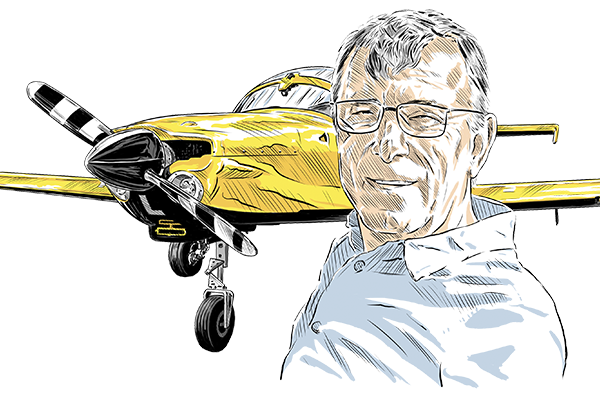Aircraft: Piper PA-28-161
When & where: 29 June 2022 at Blackpool Airport
Persons on Board: Two
Instructor’s Flying Experience: 8,876 hours
A flying instructor, who held a Class 1 Medical, died while flying with a qualified pilot. The pilot was able to land the aircraft safely. A post-mortem concluded that the instructor died from acute cardiac failure.
The CAA intends to review the circumstances of this incident to determine if anything can be learned, and if any changes should be made to the current guidance.
History of the flight
A qualified pilot had planned to fly the aircraft from Blackpool Airport to another airfield, but when he arrived at the flying club and checked the latest wind, he decided the crosswind was above his personal limit to fly on his own.
Still wanting to go flying, in order that he remained within the flying club’s recency requirements, the pilot asked an instructor if he would accompany him for a single circuit. The instructor agreed to fit in the circuit after he finished a trial lesson.
Following the trial lesson the instructor met the pilot in the PA-28 and the pilot taxied the aircraft out to the runway. The pilot recalled that during the taxi they were talking normally.
He recalled telling the instructor he would keep the aircraft into wind for the power checks and the instructor replying: “Looks good, there is nothing behind you.” The pilot did not recall the instructor saying anything else after this point.
The pilot recalled that shortly after take-off from Runway 28 the instructor’s head rolled back. The pilot knew the instructor well and thought he was just pretending to take a nap while the pilot flew the circuit, so he did not think anything was wrong at this stage. He proceeded to fly the aircraft round the circuit.
As he turned onto base leg the instructor slumped over with his head resting on the pilot’s shoulder. The pilot still thought the instructor was just joking with him and continued to fly the approach. He landed normally on Runway 28 and started to taxi back to the apron.
However, the instructor was still resting on his shoulder and was not responding, and the pilot realised something was wrong. He signalled to the airport fire crew, who happened to be working on the apron, and who came to assist.
The fire crew and the air ambulance medical crew, who are based at the airport, attempted to revive the instructor, but he remained unresponsive and they were unable to save him.
The post-mortem concluded that the instructor died from acute cardiac failure.
Nick’s analysis
This was a sudden and very sad incident which must have been very traumatic for the pilot and for the instructor’s family. We can be thankful, at least, that the instructor’s unfortunate death occurred on this flight with a qualified pilot and not on the preceding trial lesson.
The incident raises the issue of how to deal with the incapacitation of a qualified pilot or instructor.
In the airline world pilots are trained to deal with the situation in the simulator, including the ‘subtle’ incapacitation where the first sign of trouble may be the lack of a call or response.
The remaining pilot is quite capable of flying the aircraft single-handedly, possibly with the assistance of cabin crew trained to assist with checklists. They would declare a Mayday in order to alert ATC and other aircraft of their reduced operational capability.
In the GA world it is likely that there is only one pilot on board and a passenger may therefore be left in the terrifying position of being left in the air with an incapacitated pilot.
Many training organisations offer ‘Companion’ courses as a means of providing basic instruction for companions in flying the aircraft and, more crucially, obtaining assistance and landing the aircraft safely.
I remember Valerie Singleton doing such a course on Blue Peter in the 1970s! Companion courses comprise training in basic aircraft control skills, such as attaining straight and level flight, climbing and descending and turning. This might be followed by turning away from bad weather and establishing contact with ATC to get some help. Finally the training will offer practice at making an approach and landing at an airport. The course would be flown with an FI.
However, as a GA pilot there is a lot of information and training that you could offer a regular flying companion before embarking on such a course. You could get them flying regularly with you and chat about what you are doing.
Get them used to the general picture of what looks right as far as a sensible visual attitude and how much power to set. Teach them how to work out how much fuel they have remaining. They could set radio frequencies and squawks for you to get them used to that.
At the same time you could get your companion to learn the Emergency frequency of 121.5 and learn how to set that – that frequency will get them the immediate assistance that they would need in the event of pilot incapacitation, and they would be able to maintain that frequency for the rest of the flight.
On the ground you could teach them the phonetic alphabet and practice making a Mayday call, which would be the appropriate call to make in this situation in order to get help. Your companion could listen to ATC on the web to get them used to the language that we use.
Get your companion used to the idea of avoiding weather at all costs. Flying into cloud would almost certainly be catastrophic.
In the event of pilot incapacitation the companion would be well advised to head for a sizeable airport with a decently long runway and lots of assistance available. That’s where 121.5 will help. If you took off from a 600 metre farm strip it’s probably not a good idea for your companion to go back and try to land there!
So perhaps fly your companion to a large airport one day so that they can get some idea of ATC and what the airport and runway look like.
Emphasise that in an emergency situation, everyone will be working their best to help them get on the ground safely and that they have no need to worry about what any airliners might be up to – those airliners will hold or even divert if necessary to get an aircraft in distress on the ground.
So there are lots of useful preparatory items that you could cover before sending your companion to a training course, even without any flying Instructor qualifications.
Exposure to the aviation environment to gain familiarity is the best preparation, together with a calm temperament – the sudden incapacitation of a pilot would be a very worrying event and the first few seconds afterwards could dictate whether the event ends successfully or not.
And as the pilot, don’t be afraid to alert your companion early if you feel that you might be starting to suffer some sort of illness in the air that might lead to incapacitation.
Get yourself on the ground as soon as you can and don’t be afraid to seek ATC assistance by way of a Mayday call.
Clearly it goes without saying that you should not fly if you are feeling unwell in the first place, and certainly do not fly against medical advice.
To summarise:
- Get your flying companion familiar with the aviation environment as much as possible.
- Teach them how to change radio frequencies and squawks.
- Get them used to looking ahead for weather.
- Practise radio calls at home and get them to listen to ATC on the web.
- Book them onto a Flying Companion Course!





